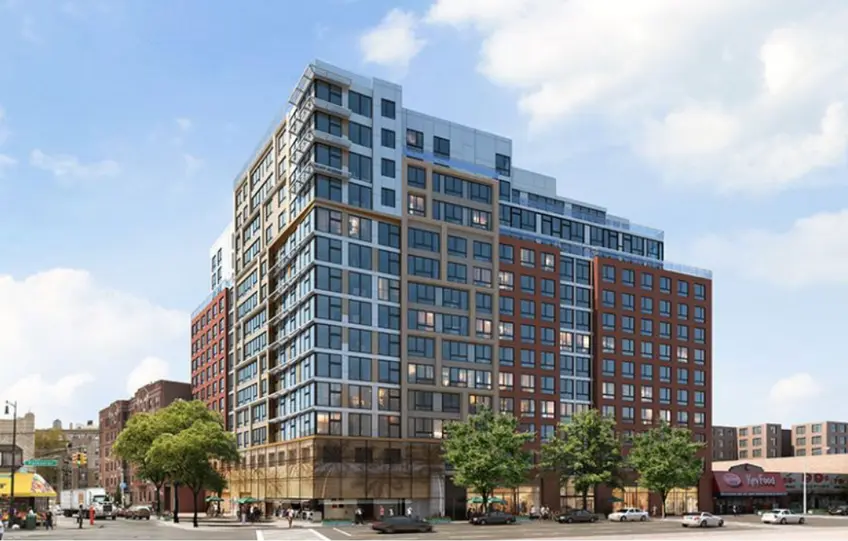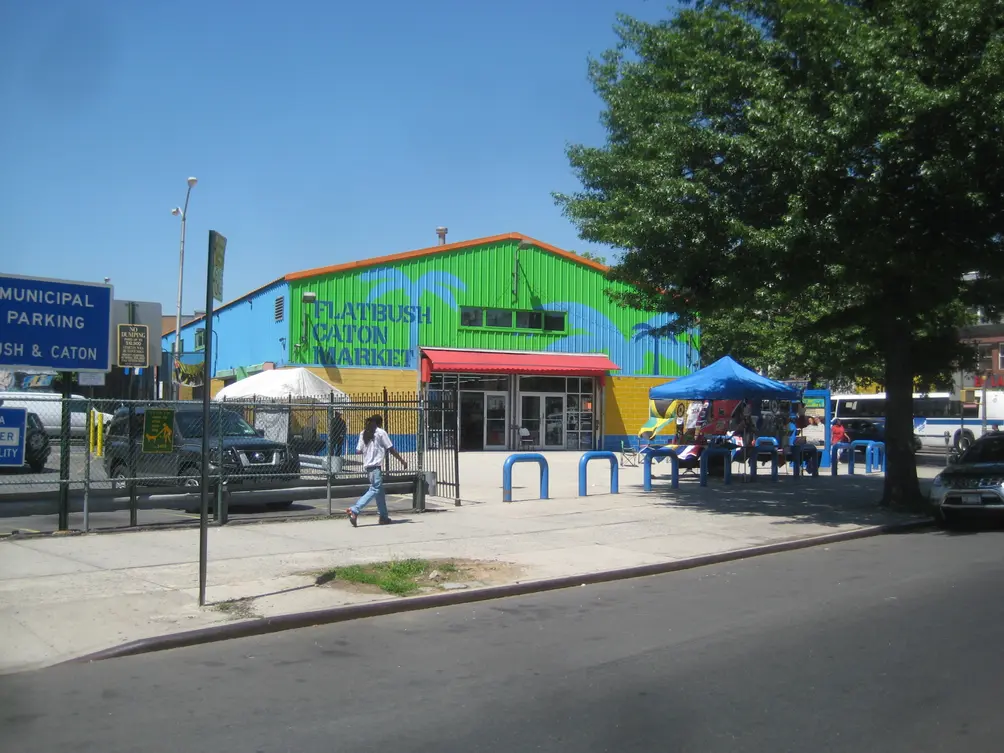 Caton Flats. Credit: Magnusson Architecture + Planning
Caton Flats. Credit: Magnusson Architecture + Planning
The design comes from Freeform + Deform, a firm led by Anaelechi Owunwanne. Varying facade treatments animate the wide, 150-foot-tall structure, where masonry- and metal-clad surfaces nod to existing context without resorting to overt historicism.
The ambitious development, listed at the Department of Buildings as 2119 Caton Avenue, replaces the original Flatbush Caton Market. Its warehouse-like shed animated the surrounding commercial strip with an abstracted, colorful palm tree mural that evoked the Caribbean tradition. The market’s similarly-themed website describes the venue as a community-sourced venture, founded in 2000 through the advocacy of Dr. Una S.T. Clarke, the first Caribbean-born woman elected to the New York City legislature, who spearheaded the transformation of a municipal parking lot into a covered market for Caribbean vendors.
 Original Flatbush Caton Market. Credit: Jeff via Flickr (see footnote for webpage)
Original Flatbush Caton Market. Credit: Jeff via Flickr (see footnote for webpage)
The redevelopment team consists of a number of public and private organizations. In addition to the Flatbush Caton Market, MAP, and CACCI, the project grows with assistance from groups such as Urbane Development, BRP Companies, NYC Economic Development Corporation (NYCEDC), NYC Department of Housing Preservation and Development (HPD), and NYC Housing Development Corporation (HDC).
Recent nearby development, such as the June topping-out of the 26-story tower at 123 Linden Boulevard, and the unveiling of the new design for One Sullivan, exemplifies revitalization of a neighborhood that is well-poised for a density upgrade, given its ample subway access, park proximity, a vibrant mix of uses, an abundance of local schools, and nearby institutions such as a library and the historic Flatbush Town Hall. However, it is doubly encouraging to see projects such as Caton Flats, where local organizers actively work with developers to make tangible upgrades to the existing community and its cultural signposts.
In the meantime, feel free to check out the market’s interim space at Flatbush Avenue and Claredon Road, or visit the official Caton Flats website.


 6sqft delivers the latest on real estate, architecture, and design, straight from New York City.
6sqft delivers the latest on real estate, architecture, and design, straight from New York City.
